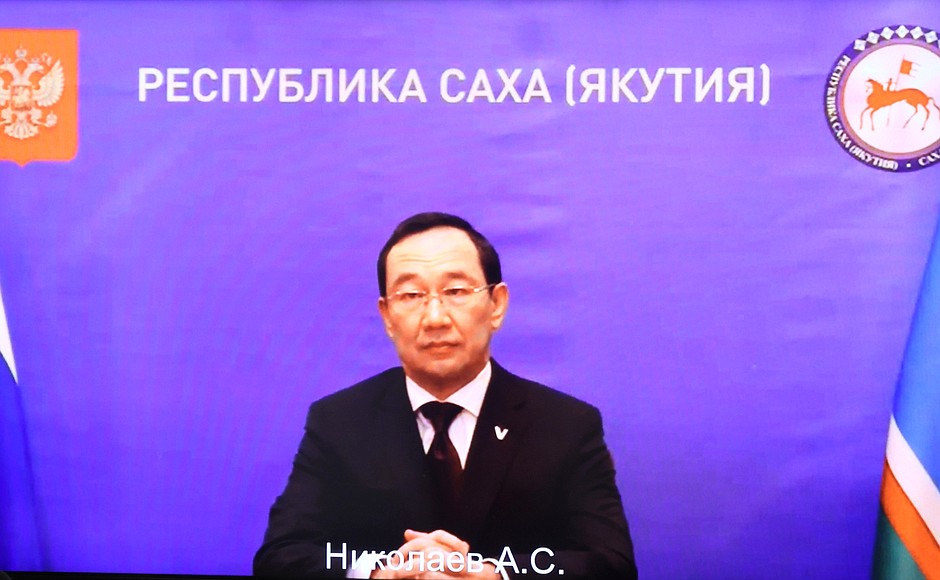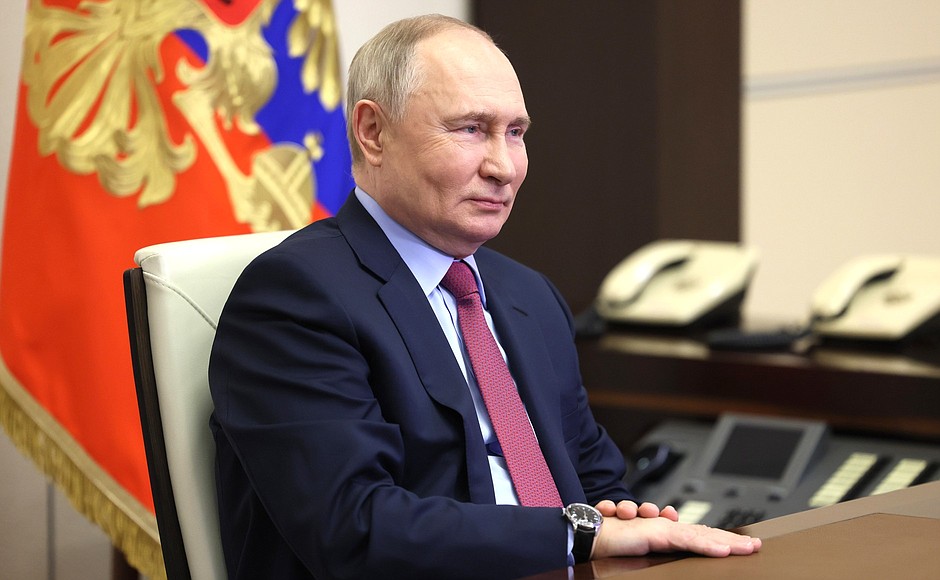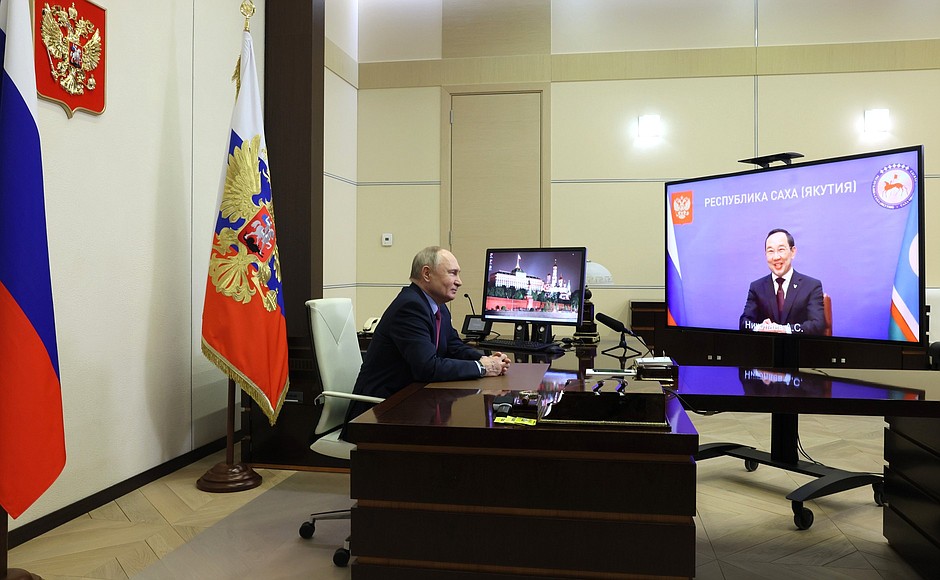At the beginning of the conversation, the President noted that preparations were being made for his working trip to the republic and in order to identify the facilities that should be visited and the problems that should be addressed, they should discuss which avenues were crucial for the region’s development.
Aisen Nikolayev said that all important aspects had to do with the current boom in the Republic of Sakha (Yakutia). In 2023, the gross regional product exceeded 2.3 trillion rubles, and in the first two months of 2024, industrial growth amounted to 13.5 percent. Yakutia is the fifth largest oil and gas producer, the third in coal, the second in gold, and the top supplier of diamonds, not only in Russia, but throughout the world. Investment activity is at a high level with 722 billion [rubles] invested last year.
According to the head of Yakutia, the population of the republic reached a million people last year; every fifth family has many children, and the regional government is implementing local measures to support families with children in addition to federal ones. Over the past six years, several large medical centres have been built in Yakutia, including a perinatal unit, a cardiovascular centre, and a cancer clinic, but the region is still in need of a local hospital for infectious diseases; the project is at the design stage. The newly deployed rural health centres, outpatient clinics, district hospitals, and large regional centres have had a palpable effect on the public health situation. For the first time in the history of Yakutia, life expectancy exceeded the national average and reached 73.67 years in November. The goal is to reach 80 years or more by 2030.
Aisen Nikolayev singled out the fight against poverty as one of the region’s priorities. The goal is to halve the current poverty rate of 15 percent in the next few years, and to reduce it by two-thirds among large families.
According to the head of Yakutia, in recent years, a total of 329 large social facilities have been built under national projects and regional programmes. At the same time, Aisen Nikolayev admitted that the regional government needed assistance in building more housing to relocate residents from dilapidated and emergency buildings.
They also discussed the progress of major investment projects, in particular, the Chayandinskoye oil and gas condensate field and the Elga field, which currently sends 28 million tonnes of coking coal to the world markets. Five factories with a total capacity of 24.5 million tonnes have already been launched. This year, there will be two more, with a capacity of 15 million tonnes. A 530-kilometre railway is under construction. Next year, 15 million tonnes [of freight] will be transported, and from 2026, the plan is to increase this amount to 40 million tonnes. The Elga deep-water port, which is being built in the Khabarovsk Territory, is designed to transship up to 50 million tonnes of coal. This year, the region will begin the construction of the largest diamond mine, Mir-Gluboky, which will ensure the future of diamond mining for the next 50 years.
The Head of the Republic said that they will need to discuss the investment cycle and its future during the President’s visit. In the diamond mining sector, these cycles are very long and take 10 to 15 years, which means that decisions must be taken today. Otherwise, after 2030 we will have to face the fact that there will be no new deposits in operation as the old ones will have become depleted. The visit’s agenda must also include building a small nuclear power plant in Yakutia to support several major mining projects. In addition to this, there is a need to address other energy-related matters, as well as efforts to develop Yakutia’s transport system, including building the Lena bridge, which will make a major difference for all of northeast Russia. Head of Yakutia Aisen Nikolayev also mentioned building higher education facilities and asked the President to support these plans.
Aisen Nikolayev went on to brief the President on efforts to promote the digital transition in his region. Over the past six years, they have laid 10,000 km of fibre optic cables and will need to extend this network by another 6,000 km in order to cover the Yakutian Arctic, as well as parts of the Magadan Region and the Chukotka Autonomous Area, and to connect it to the underwater fibre optic cable along the Northern Sea Route. These projects are scheduled to be completed by the end of 2026 and will greatly enhance national telecommunications security.
Yakutia has adopted a proactive approach towards the special military operation, just like the entire country. Aisen Nikolayev described social support measures for the families of service personnel. He emphasised that people from the Republic have demonstrated heroism on the battlefield, and six Yakutians have received the Hero of Russia title.
Aisen Nikolayev also talked about Yakutia assuming patronage over the Donetsk People’s Republic. They have completed the programme to rebuild Kirovskoye and created the first IT centre in the DPR. A Yakutian eye clinic has opened a branch office there, and has already treated 10,000 patients and performed over 2,000 eye surgeries.
Vladimir Putin thanked the Republic and its representatives for their support and for fulfilling their mission and duty to their Motherland along the line of contact and the frontlines. They have demonstrated heroism, the President said, and asked the Head of the Republic to support their families.
As for the urgent challenges Yakutia is facing today, the President said that he would ask the Government to look into all the issues Aisen Nikolayev raised during their conversation before the meeting in the republic. The President expressed confidence that the necessary decisions will be taken on all the key issues to ensure the Republic’s sustained and steady development.


